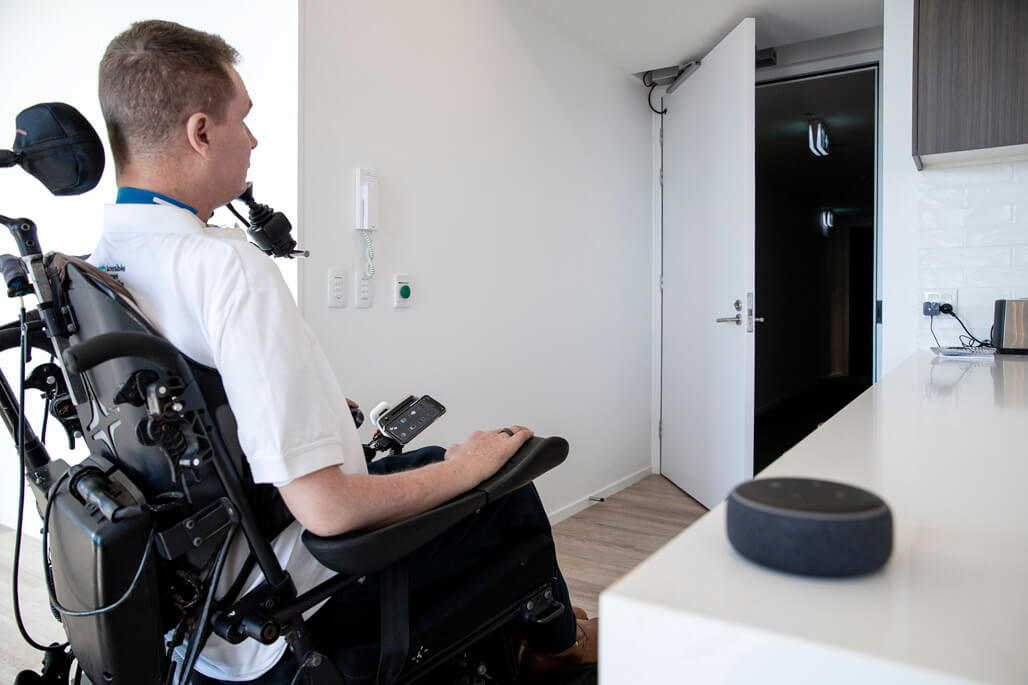Advancements in assistive technology have made a life-changing impact on Australians living with high physical support needs, including our Founder, Perry Cross AM. All Accessible Homes Australia (AHA) Specialist Disability Accommodation (SDA) apartments are fitted with high-speed wifi connection, communications systems and provisioning for customised home automation features to help tenants live life with greater independence and control.
Alan Cunningham, SDA Specialist at smart assistive technology company Livigy, has specialised in the design, supply, and installation of assistive technology throughout Australia over the last two decades. Alan looks after the assistive technology within AHA’s SDA projects and has great insight into the role of AT and where it falls within SDA.
What is assistive technology?
“Assistive technology is equipment designed to automate tasks that would otherwise be difficult or unable to be performed by someone,” says Alan.
“It plays an important role in allowing people living with disabilities to complete everyday tasks without the support of a carer — which is a first for many.
“Through assistive technology and voice automation, everyday things that may be taken for granted by those not living with a disability — such as changing the channel, controlling the lighting or even opening the front door — are made possible.”
Assistive technology in AHA SDA apartments
“All AHA homes are certified to the High Physical Support SDA Design Category. This means they are fitted with a base level of supportive assistive technology infrastructure,” says Alan. This technology includes communication networks between the participant and support staff, controls for lighting and blinds, and the automation of fans and door-openers.
“Once an AHA SDA tenant has been confirmed, to ensure their home is liveable long-term and that their SDA funding is being utilised in the most cost-effective way, we meet with them, their occupational therapist, and carer,” he says.
“In our meeting, we work together to establish their individual living goals and needs for the future and identify the equipment required to achieve this.
“From there, a brief is created with what assistive technology is needed in their unit to help them live more independently and submitted to the NDIS for funding.
“Once approved, we begin installing these additional assistive technologies as soon as possible.”
What is the future of assistive technology?
Alan says it’s exciting to think about the future of assistive technology, what it will look like and the opportunities it will present to households. “I’m especially interested to see how artificial intelligence will be used in the future with its ability to better understand the nuances in requests and how it can help innovate automation,” he says.
Read more on how assistive technology is changing lives or contact our team to discuss your SDA needs.
